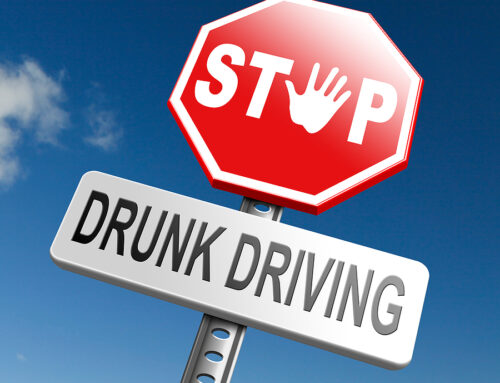For several years, pressure has been increasing on police agencies across the country to keep a more thorough and accurate accounting of incidents in which police use force against members of the public. New Jersey has responded to this call for accountability by introducing an interactive database cataloging every occasion on which a New Jersey police officer has used force on the job.
 The use of force by police can include acts ranging from grappling with or striking a suspect bare-handed to the use of any weapon, including discharging their firearm and shooting a suspect. While the use of force can be appropriate in situations that arise normally as part of police work, advocacy groups have raised concerns about an epidemic of excessive force used by police, particularly against certain vulnerable groups. With hard data now available through the newly introduced interactive data portal, the reality of these worrying trends is revealed in clear numbers. In the five-month span encompassed by the cataloged reports, New Jersey police reported using force on Black members of the public a total of 2,434 times, more than against any other racial group. This number accounted for more than 44 percent of all use-of-force incidents, although Black residents comprise less than 20 percent of the New Jersey population. In addition, more than one-fifth of all the force encounters reported were labeled as “potential mental health incidents.” There has long been criticism over the way police intervene in situations involving a person experiencing a mental health crisis, and these 1,192 incidents during a five-month span potentially comprise a firm grounding for these worries.
The use of force by police can include acts ranging from grappling with or striking a suspect bare-handed to the use of any weapon, including discharging their firearm and shooting a suspect. While the use of force can be appropriate in situations that arise normally as part of police work, advocacy groups have raised concerns about an epidemic of excessive force used by police, particularly against certain vulnerable groups. With hard data now available through the newly introduced interactive data portal, the reality of these worrying trends is revealed in clear numbers. In the five-month span encompassed by the cataloged reports, New Jersey police reported using force on Black members of the public a total of 2,434 times, more than against any other racial group. This number accounted for more than 44 percent of all use-of-force incidents, although Black residents comprise less than 20 percent of the New Jersey population. In addition, more than one-fifth of all the force encounters reported were labeled as “potential mental health incidents.” There has long been criticism over the way police intervene in situations involving a person experiencing a mental health crisis, and these 1,192 incidents during a five-month span potentially comprise a firm grounding for these worries.
The current interactive data portal was modeled after The Force Report, an investigation released in 2018 by NJ Advance Media that revealed both systemic and individual issues with the use of force by police, from racial disparities in application of force to specific officers with excessively high use-of-force rates; one officer was later brought up on criminal charges for assault. The Force Report in 2018 was a compilation of tens of thousands of use-of-force forms, many of which were not readily accessible to the public, and the results of this report forced the state Attorney General and police leaders to acknowledge that they had not kept a close and accurate accounting of the way officers used force on the job. There was also criticism of The Force Report, however, as some police chiefs and union leaders pointed out that different standards were used by different departments in terms of when and how to report force used by police, raising concerns about the accuracy of the conclusions reached. This methodological issue has been addressed with the new database, however, as every officer and department in New Jersey have used the same online form to document every police encounter involving violence since October 1 of last year. This standardization will ensure more fair and accurate comparisons between individual officers and between police departments in different cities.
The level of detail going into these reports is also greater than previously available, which is all the more important for a database available to public perusal. In the online form submitted to report each use-of-force incident, officers can describe why they believed force was necessary in the situation, and whether the suspect in question appeared drunk. The names of the officers involved in each incident are included in the database, but to protect the privacy of the private individuals affected, the names of the members of the public who had force used against them are omitted, as are the specific locations at which the incident took place. Incidents involving the use of force by police must be documented through the online form within 24 hours of occurrence, though the database will not update immediately.
While New Jersey’s use-of-force data portal is still a work in progress – with officials describing its public release earlier this month as a “beta phase” – it is clear that the state is pioneering a new path in accountability and transparency for police officers and departments. A few other states have taken steps toward making use-of-force data available to the public: The New York Police Department publishes general force trends, and California makes the statistics for specific police departments available for public viewing, but other states generally provide only summaries of the way force is used by their police departments. The executive director of the National Association of Police Organizations, Bill Johnson, praised New Jersey’s data portal as “the first one I’ve heard of that has such a degree of granularity.” Already, New Jersey’s efforts to document and publish the use of force by police are having an effect: in December, the first policy overhaul in decades governing the use of force by police was announced, placing greater emphasis on protecting “the sanctity of human life.”
Contact MyNJInjuryLawyer
If you or a loved one involved in an incident with law enforcement in NJ, you should contact an attorney familiar with handling these cases. Howard P. Lesnik is a board certified criminal trial attorney by the NJ Supreme court and is experienced in handling both criminal and civil actions involving law enforcement.
My NJ Injury Lawyer Howard P. Lesnik, Esq. offers complimentary strategy sessions to address any issue or questions you may have for your injury claim in NJ. Please contact me now by email, by phoning 908.264.7701, or by completing the form to the right to schedule your complimentary 30-minute strategy session.







